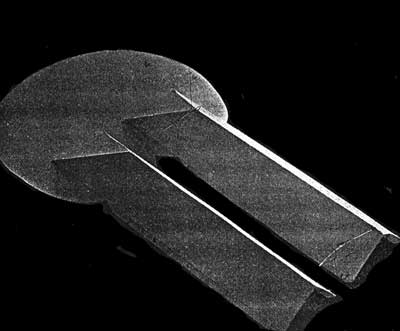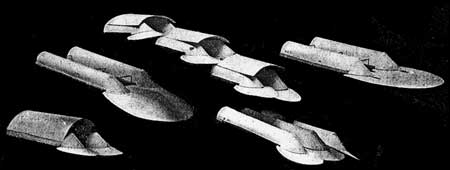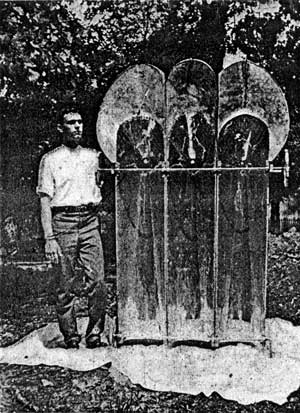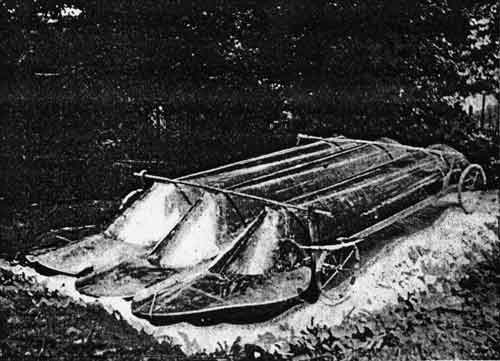

Great attention has been given to the subject of mechanical flight by Washington scientists, notably Prof. Alexander Graham Bell and Mr. Emile Berliner, the well-known inventor. Mr. Berliner recently designed a small model of a flying machine which lifts, in flying, a weight of over one pound for every square foot of horizontal area at a speed estimated at less than 20 miles an hour. The model is of aluminium and tin plate, with rods of oak and metal tubing for supports. It weighs about 34 pounds including ballast. The motive power for horizontal propulsion was supplied by two common skyrockets, attached to the rear of the machine, which is 7 feet long. On August 19 it lifted itself from the ground and attained a height of 8 feet, maintaining itself for a distance of 40 feet at an almost even height of 3 1/2 feet from the ground. No launching device was employed, a push of the hand being given in starting. The main body consists of arches opened below and sloping down in the rear, where wide tail ends are attached. The arches in moving forward tend to produce a current of compressed air, and at the same time exert a parachute action which helps to support the entire structure, but the main lifting is done by the inclined and spreading tail pieces catching the air current. Wheels are attached to the body to facilitate the attaining of initial speed on any fairly smooth surface, and they have now been mounted elastically in order to modify sudden shocks should the machine strike against a hard surface. The horizontal area of the machine is 30 square feet. During the recent experiments the ballast was lifted to the rear of the machine. It then rose to a height of about 8 feet, after 40 feet travel, then turned backward, and was damaged coming down on the unprotected back. The rapidly moving aeroplane is considered by scientists to be the proper solution of the problem of mechanical flight, and the principal endeavor of experimenters in this line of work has been to provide a motive power which is both light and of sufficient propelling force to move a given weight of aeroplanes rapidly forward through the air.

Cardboard Model of Aeroplane.

Cardboard Models.
The experiments of Mr. Berliner are not of recent origin. Eighteen years ago he constructed a full sized model flying machine, which was not successful, and nearly thirty years ago, in a communication to the SCIENTIFIC AMERICAN, he proposed the very principle of propulsion of flying machines, a stream of compressed air or gas, which he is using in his experiments.

Body of the Aeroplane.
Mr. Berliner is now engaged in the construction of a small improved model having a small car attached underneath, with which he intends to make elaborate experiments in order to arrive at more correct data for ascertaining the lifting power per square foot of the horizontal area of his machine. The new model will be sufficiently large to serve as a basis for designing a machine capable of lifting, besides its own weight, a person and the motor for propelling the machine at a possible rate of 20 to 30 miles an hour.

The Aeroplane at Rest.
Originally appeared in Scientific American, 89, September 26, 1903, p. 216.